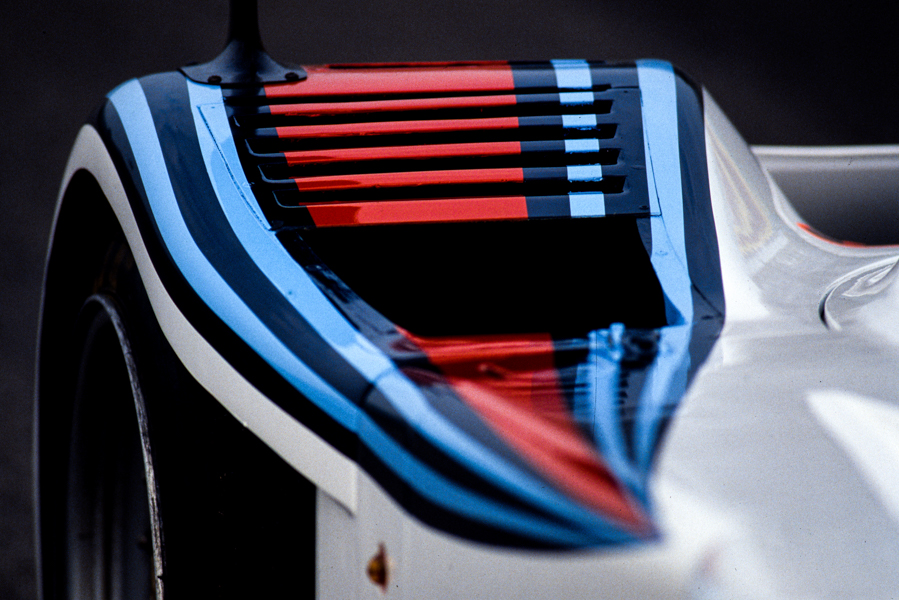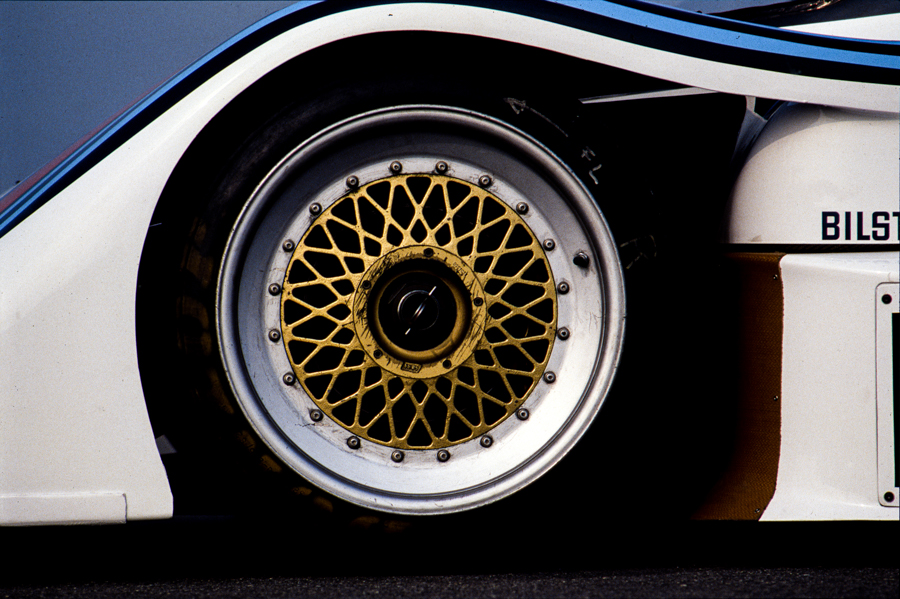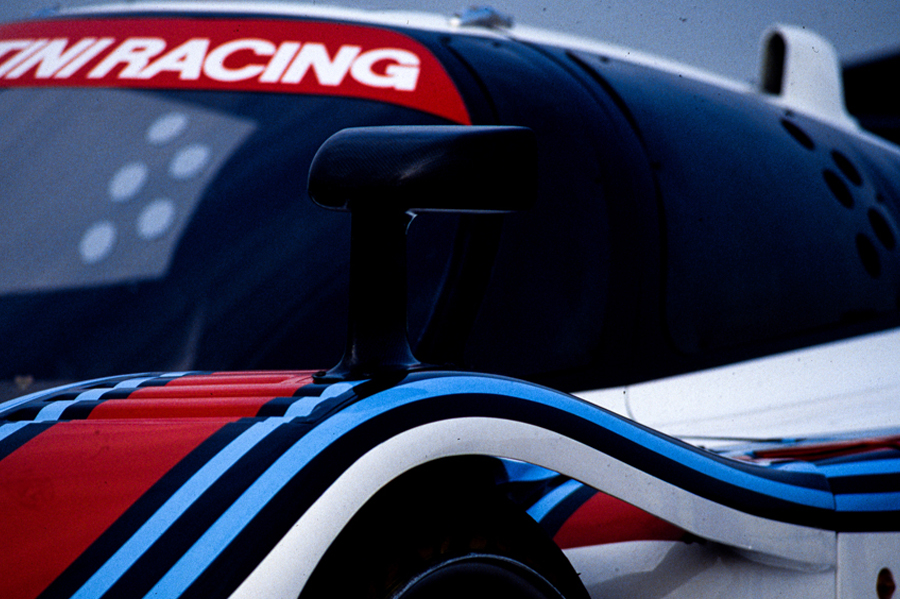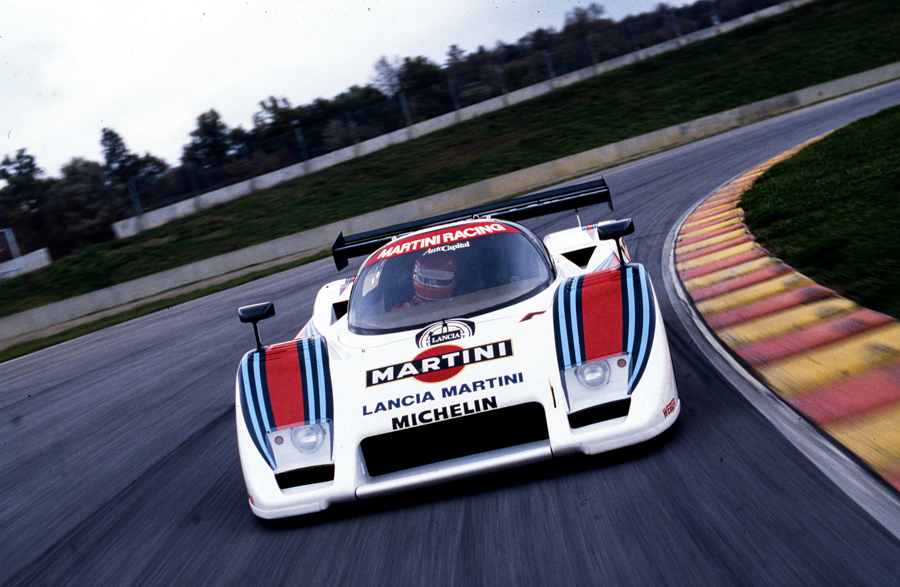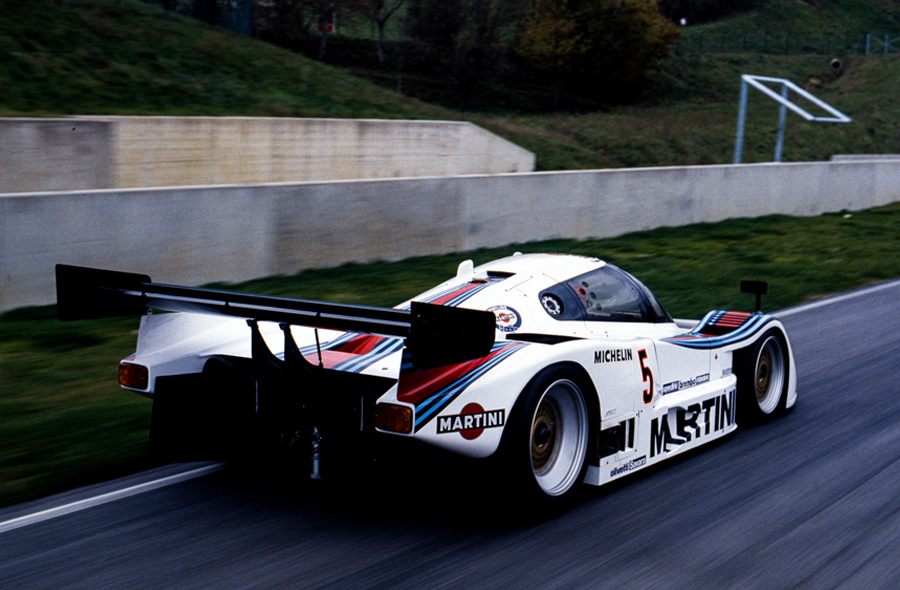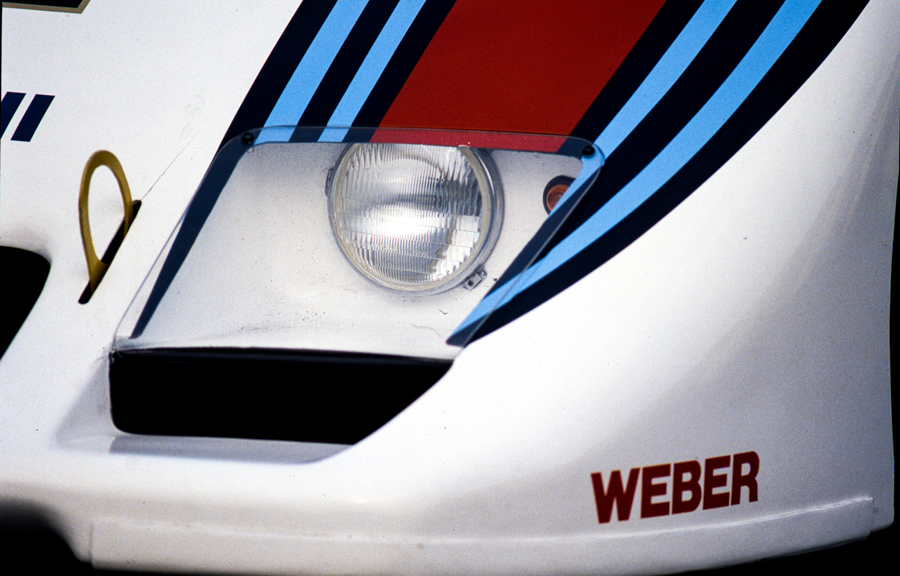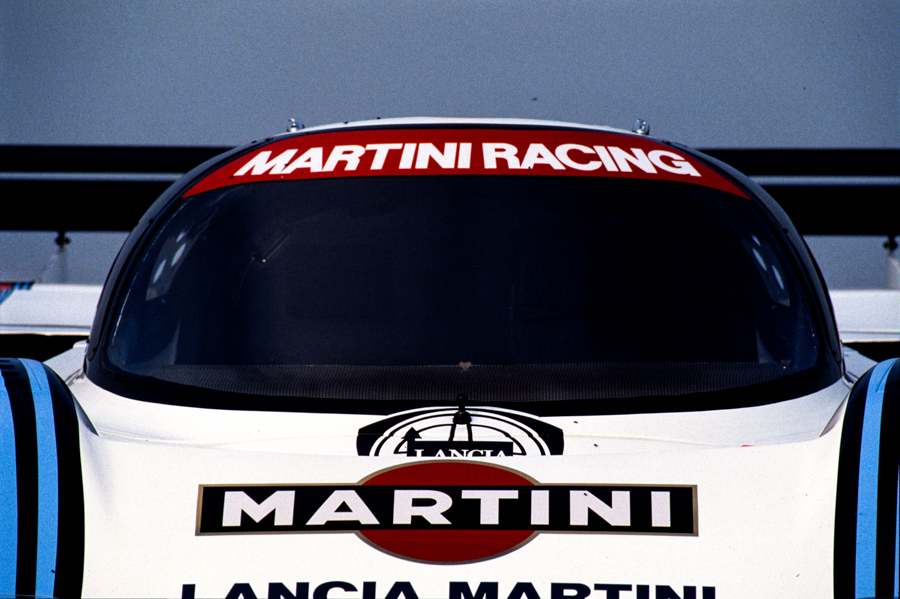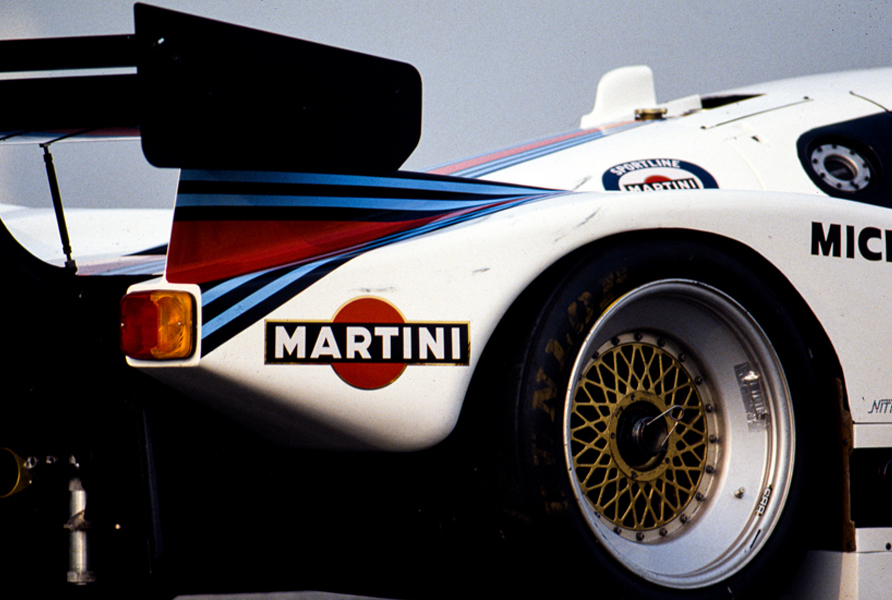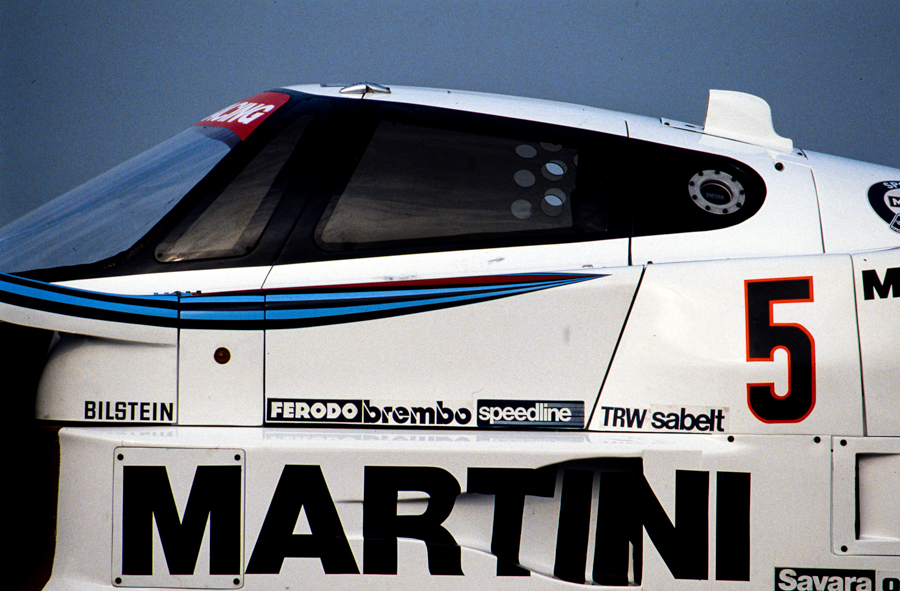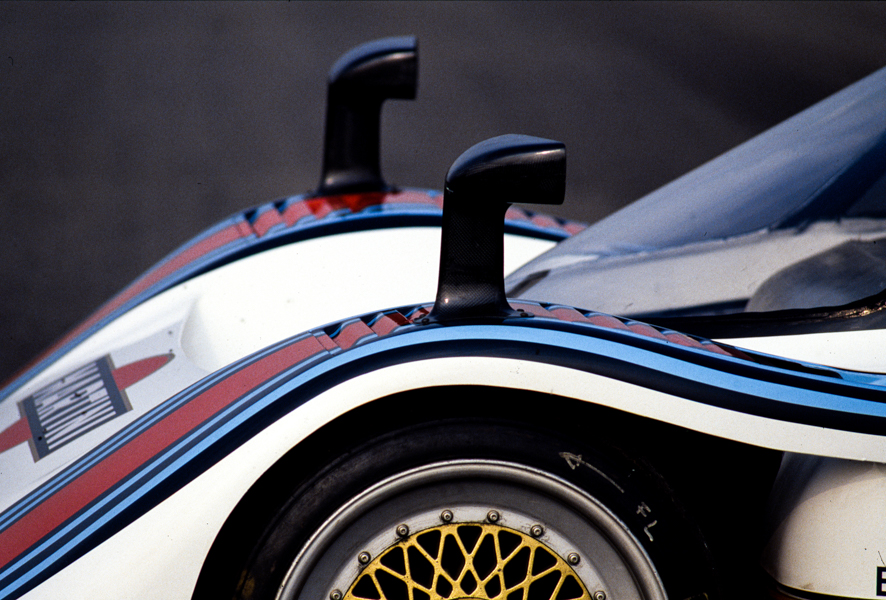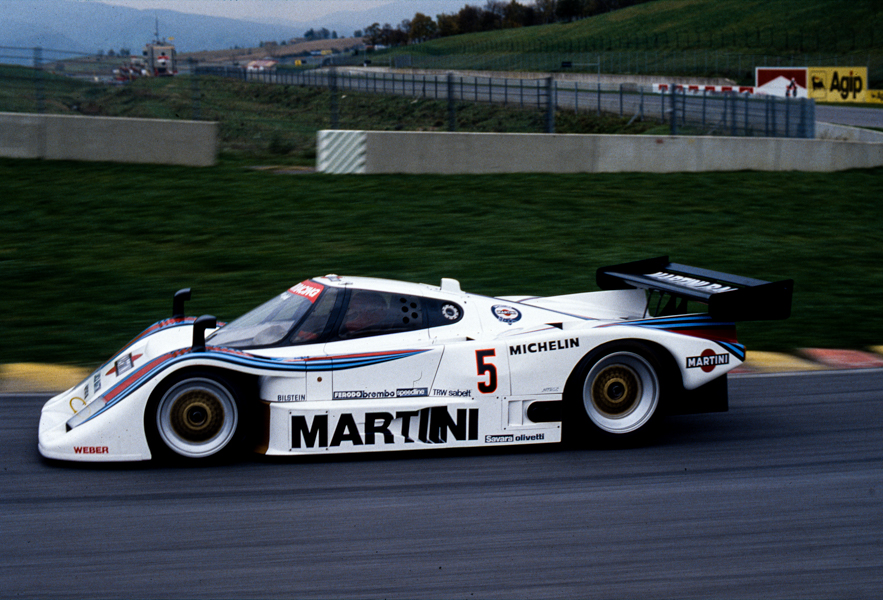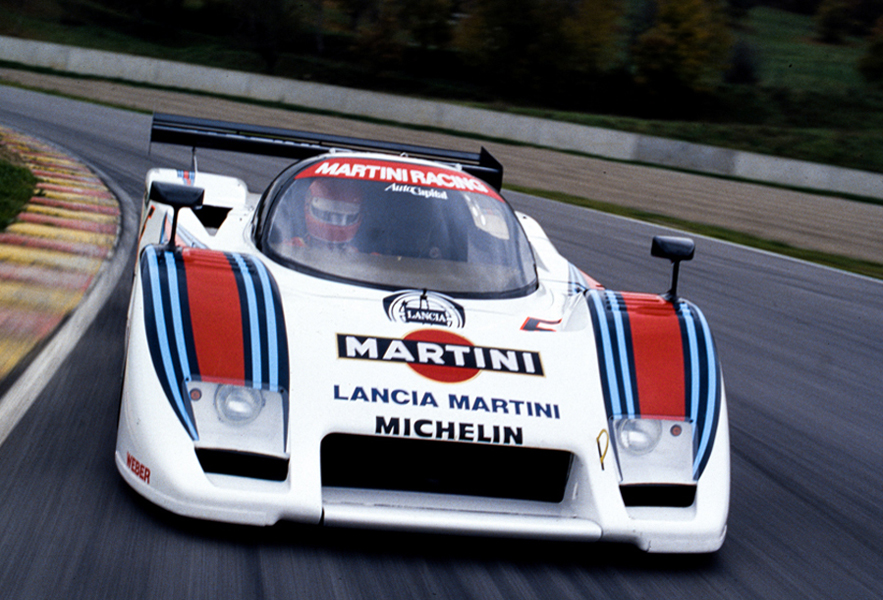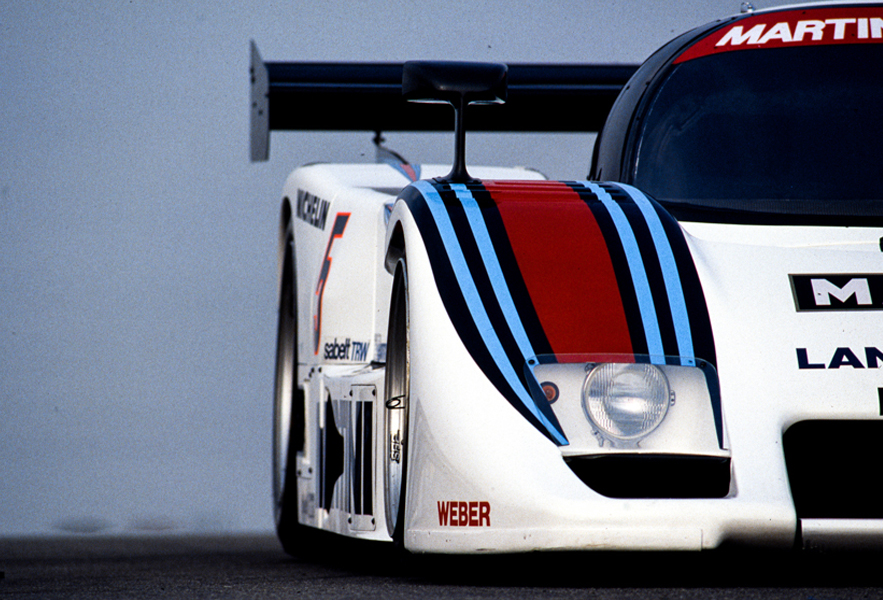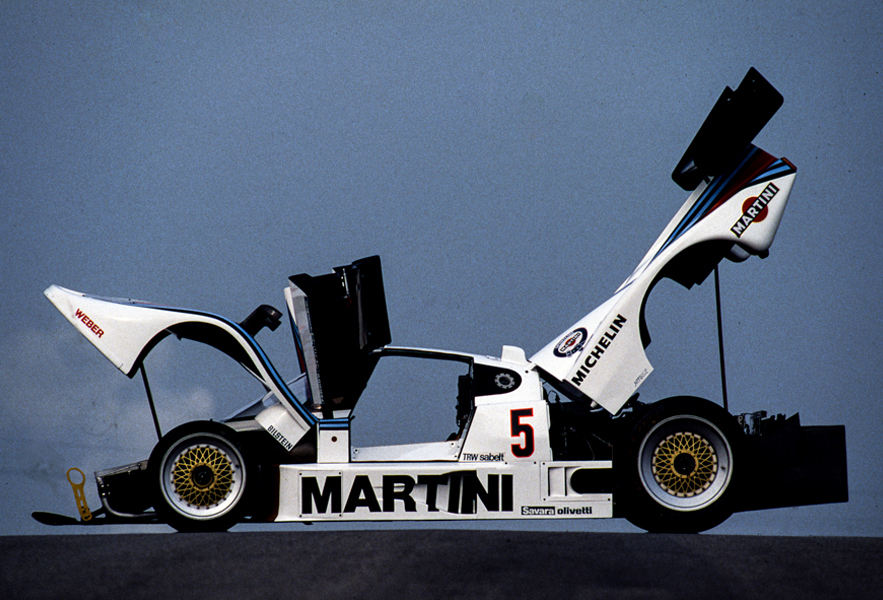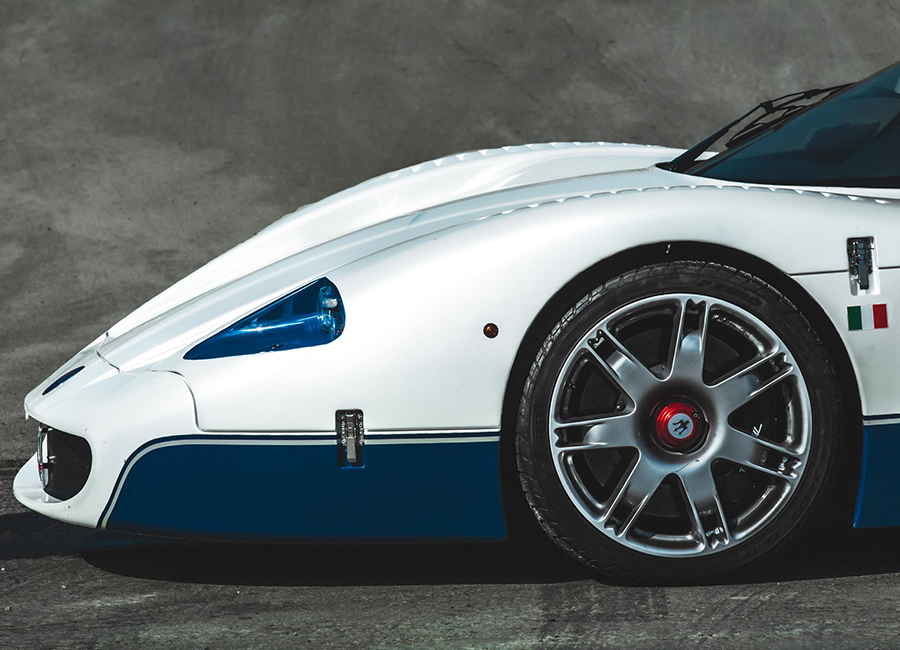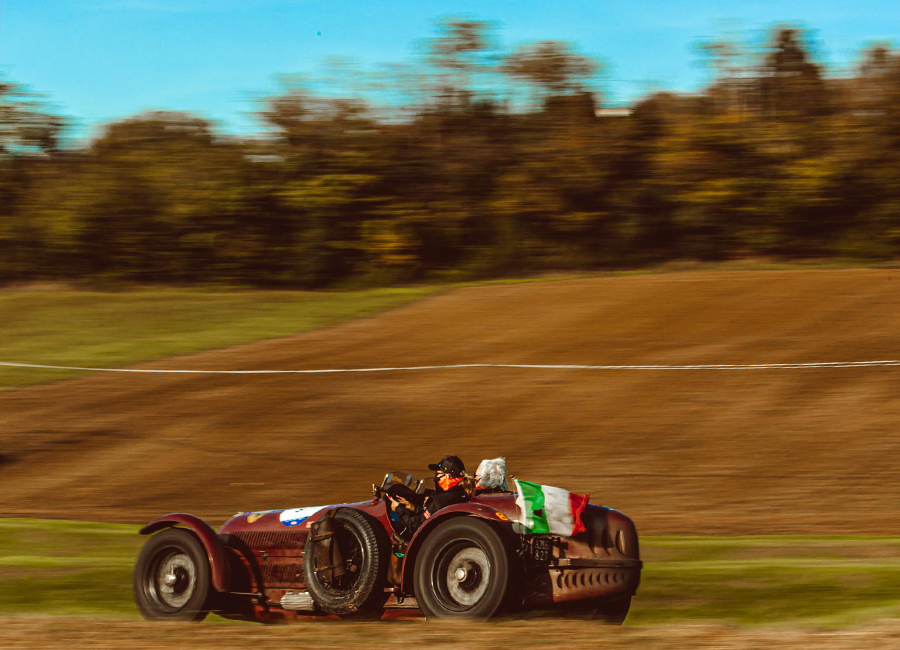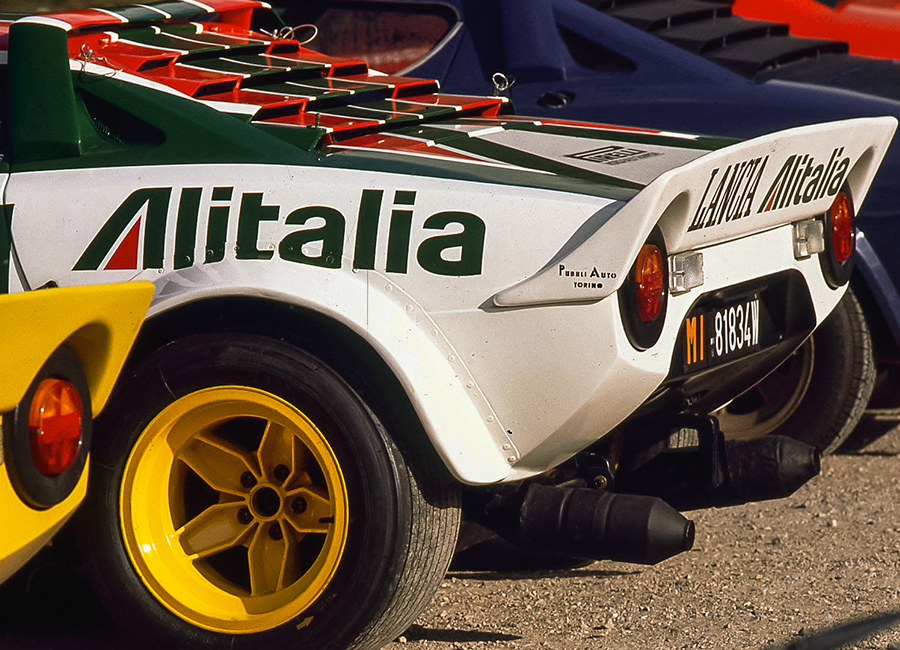PROTOTYPE MONSTER
Lancia and Ferrari, a fellowship well-established that has far origin in racing history.
LC2 project born in 1982, after that the Barchetta LC1 stated the official Lancia return to the racetrack that year - new Group C regulations introduced requiring teams to use coupe-style cars.
To understand the origin of the collaboration between Ferrari and Lancia, we have to step back to 1954. Lancia built and entered a single-seater for 1954 and 1955 Formula One season: after has been employed in racing for two years, Lancia has given it to Scuderia Ferrari. This car was then developed in Maranello and rebadged as Lancia-Ferrari D50 (later only Ferrari D50). In 1956 the D50 led Juan Manuel Fangio to its fourth F1 World Championship title.
LC2 chassis creation was entrusted to Gianpaolo Dallara (anyone knows the Lambo Miura?!) who prepared it in his Vairano’s Factory. Times were very tight cause Lancia would use it for the debut at 1000km Monza, and they were observed. The first LC2 prototype has been unveiled to the press on 9th February 1983, and, soon after, it was ready to deal with battle-hardened Porsches 956, a dominant figure on competitions.
On about 850kg and with 840hp at disposal (an easy way to make power-to-weight ratio!), this monster on wheels has an aluminium monocoque, Kevlar and carbon fibre bodywork – garnished by Martini Racing livery – as a dress of the powerful twin-turbo eight-cylinder engine projected in Maranello, and able to run at 9000 rpm. Engine’s heads derived from that of 288 GTO, with a special high-temperature treatment for guarantee a higher endurance to the aluminium. The engine block, indeed, were specially projected and built with a dry sump. Two KKK turbines worked at a maximum pressure of 3 bars and were provided by two Behr intercoolers, they started to work together at 3000 rpm, and the torque was incredible: 111kgm at 5000rpm!
For the 1983 World Endurance Championship first race of the season (10th April at Monza), Lancia Martini Racing entered two LC2s, entrusted the management to the expert drivers such as Ghinzani-Fabi and Alboreto-Patrese. Inasmuch as free-standing performance, the debut was promising: Ghinzani-Fabi conquered the pole position with the LC2 number #5, but in the race, it doesn’t arrive at finish line due to a tyre explosion on straight. Alboreto and Patrese finished at 9th position with number #4, just behind the LC1-82 driven by Dulio Truffo and Roberto Sigala (number #23) – Porsche 956 #11 (Bob Wolleck/Thierry Bousten) won the race.
During the racing season, the LC2s felt various reliable mechanical failures even if their performances demonstrated to be worthy, if not better, of competitors. Entered ten races in the season, it won at Imola, finished second at Mugello and Kayalami – despite the embarrassing point deficit with Porsche (100 compared to 32 achieved by Lancia), the Italian Team took second place in World Constructors Championship.
The LC2 “first series” fitted a Ferrari V8 2.6 L twin-turbocharged engine, replaced with a more reliable and powerful 3000cc – also built in Maranello – in 1984, when Cesare Fioro (Lancia racing Team principal) “enlisted” Nannini, Baldi, and Wolleck as additional Team drivers for the racing season. Reliable minor improvements were brought to the car, even if tyres failure (already present in passed season) often prevented to finish the race – rear driveshaft weakness was the issue.
1985 has been a stingy year regarding success for LC2 in competitions, predicting the retirement of Lancia Official Team in Endurance Championship, at the end of 1986 season. But LC2s didn’t retire definitely from competitions; indeed, Gianni Mussato acquired the Lancia LC2 “Motor Pool” and, under his own Mussato Team, continued to develop the car and race from 1987 to 1991 in Endurance.
Almost 40 years have been passed from the LC2 starting point – an “alien” example of how technology can produce superlative vehicles that, sometimes, fail to express their full potential due to the large number of costs that their continuous updating and studying for reliability require. Results did not live up to expectation, and its racing career limited to 3 first Over All, but, for the collective imagination, it is a Motorsport icon.
PS: Anyone noticed or ever seen before that squared-off rear lights?! They are that of the FIAT 238 van.
ENGINEROUTE
PROTOTYPE MONSTER
Lancia and Ferrari, a fellowship well-established that has far origin in racing history.
LC2 project born in 1982, after that the Barchetta LC1 stated the official Lancia return to the racetrack that year - new Group C regulations introduced requiring teams to use coupe-style cars.
To understand the origin of the collaboration between Ferrari and Lancia, we have to step back to 1954. Lancia built and entered a single-seater for 1954 and 1955 Formula One season: after has been employed in racing for two years, Lancia has given it to Scuderia Ferrari. This car was then developed in Maranello and rebadged as Lancia-Ferrari D50 (later only Ferrari D50). In 1956 the D50 led Juan Manuel Fangio to its fourth F1 World Championship title.
LC2 chassis creation was entrusted to Gianpaolo Dallara (anyone knows the Lambo Miura?!) who prepared it in his Vairano’s Factory. Times were very tight cause Lancia would use it for the debut at 1000km Monza, and they were observed. The first LC2 prototype has been unveiled to the press on 9th February 1983, and, soon after, it was ready to deal with battle-hardened Porsches 956, a dominant figure on competitions.
On about 850kg and with 840hp at disposal (an easy way to make power-to-weight ratio!), this monster on wheels has an aluminum monocoque, Kevlar and carbon fibre bodywork – garnished by Martini Racing livery – as a dress of the powerful twin-turbo eight cylinder engine projected in Maranello, and able to run at 9000 rpm. Engine’s heads derived from that of 288 GTO, with a special high-temperature treatment for guarantee a higher endurance to the aluminum. The engine block, indeed, were specially projected and built with a dry sump. Two KKK turbines worked at a maximum pressure of 3 bars and were provided by two Behr intercoolers, they started to work together at 3000 rpm, and the torque was incredible: 111kgm at 5000rpm!
For the 1983 World Endurance Championship first race of the season (10th April at Monza), Lancia Martini Racing entered two LC2s, entrusted the management to the expert drivers such as Ghinzani-Fabi and Alboreto-Patrese. Inasmuch as free-standing performance, the debut was promising: Ghinzani-Fabi conquered the pole position with the LC2 number #5, but in the race, it doesn’t arrive at finish line due to a tyre explosion on straight. Alboreto and Patrese finished at 9th position with number #4, just behind the LC1-82 driven by Dulio Truffo and Roberto Sigala (number #23) – Porsche 956 #11 (Bob Wolleck/Thierry Bousten) won the race.
During the racing season, the LC2s felt various reliable mechanical failures even if their performances demonstrated to be worthy, if not better, of competitors. Entered ten races in the season, it won at Imola, finished second at Mugello and Kayalami – despite the embarrassing point deficit with Porsche (100 compared to 32 achieved by Lancia), the Italian Team took second place in World Constructors Championship.
The LC2 “first series” fitted a Ferrari V8 2.6 L twin-turbocharged engine, replaced with a more reliable and powerful 3000cc – also built in Maranello – in 1984, when Cesare Fioro (Lancia racing Team principal) “enlisted” Nannini, Baldi, and Wolleck as additional Team drivers for the racing season. Reliable minor improvements were brought to the car, even if tyres failure (already present in passed season) often prevented to finish the race – rear driveshaft weakness was the issue.
1985 has been a stingy year regarding success for LC2 in competitions, predicting the retirement of Lancia Official Team in Endurance Championship, at the end of 1986 season. But LC2s didn’t retire definitely from competitions; indeed, Gianni Mussato acquired the Lancia LC2 “Motor Pool” and, under his own Mussato Team, continued to develop the car and race from 1987 to 1991 in Endurance.
Almost 40 years have been passed from the LC2 starting point – an “alien” example of how technology can produce superlative vehicles that, sometimes, fail to express their full potential due to the large number of costs that their continuous updating and studying for reliability require. Results did not live up to expectation, and its racing career limited to 3 first Over All, but, for the collective imagination, it is a Motorsport icon.
PS: Anyone noticed or ever seen before that squared-off rear lights?! They are that of the FIAT 238 van.
ENGINEROUTE


